Cassod Tree, Siamese senna tree
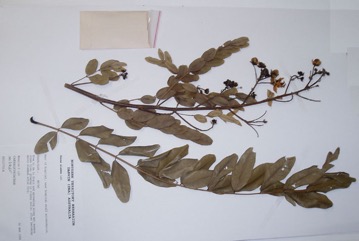
A tropical plant. It comes from SE tropical Asia and grows in Ethiopia and East Africa. It suits subhumid and arid zones in the tropics. It grows in the Sahel. It needs moist, well drained soils. In East Africa it grows from sea level to 1,600 m altitude. It grows in areas with a rainfall of 700-1500 mm annual average. It is drought and frost tender. It can grow in arid places. It suits hardiness zones 10-11. In Yunnan.
Also known as:
Ai-coxote, Angkanh, Boordi, Jaha, Jahor, Jeragor, Kasod tree, Kassod, Keelek, Keshya wa milimo, Khee lek, Khi lek, Ki lak yai, Lin pakk kee lek, Maixili, Manje-konne, Muong den, Muong xiem, Phak khee lek, Pohon johar, Sebusok, Sia sunaru, Sima tangedu, Thailand shower
Synonyms
- Cassia florida Vahl.
- Cassia siamea Lam.
- Sciassia siamea (Lam.) Britt.
Edible Portion
- Leaves, Flowers, Fruit, Pods, Vegetable
Where does Cassod Tree grow?
Found in: Africa, Antigua and Barbuda, Asia, Australia, Barbados, Benin, Brunei, Cambodia, Central Africa, Chad, China, Congo DR, Côte d'Ivoire, Cuba, Dominica, Dominican Republic, East Africa, East Timor, Eritrea, Eswatini, Ethiopia, Fiji, Ghana, Grenada, Guinea, Guinée, Guinea-Bissau, Guyana, Haiti, Hawaii, Himalayas, India, Indochina, Indonesia, Ivory Coast, Jamaica, Kenya, Laos, Malawi, Malaysia, Mali, Marquesas, Mozambique, Myanmar, Nepal, Niger, Nigeria, Northeastern India, Pacific, Papua New Guinea, PNG, Philippines, Puerto Rico, Rotuma, Sahel, Sao Tome and Principe, SE Asia, Senegal, Sierra Leone, Somalia, South Africa, Southern Africa, Sri Lanka, St Lucia, St Vincent and the Grenadines, Swaziland, Tanzania, Thailand, Timor-Leste, Togo, Trinidad and Tobago, Uganda, United States, Vietnam, Virgin Islands, West Africa, West Indies, Zambia, Zimbabwe
Notes: There are about 100 Cassia species. Also as Caesalpinaceae.
Status: It is not known if they are used in Papua New Guinea.
Growing Cassod Tree, Siamese senna tree
Cultivation: The plants are grown from seed. The seed need to have the hard seed coat broken before planting. The plants can be cut back and will re-grow. They can be used as a hedge.
Edible Uses: The young flowers, fruits and leaves are eaten cooked. The leaves are eaten in Thailand after boiling for 1-2 hours and then discarding the water. They are bitter but are used in soups. The flowers are eaten in curries. CAUTION: The leaves and seeds are poisonous without treatment.
Production: It has a fast growth rate.
Nutrition Info
per 100g edible portion| Edible Part | Energy (kcal) | Protein (g) | Iron (mg) | Vitamin A (ug) | Vitamin c (mg) | Zinc (mg) | % Water |
|---|---|---|---|---|---|---|---|
| Leaves | - | - | - | - | - | - | |
| Leaves | 114 | 7.4 | 5.3 | - | - | - | 65.6 |
Cassod Tree, Siamese senna tree Photos

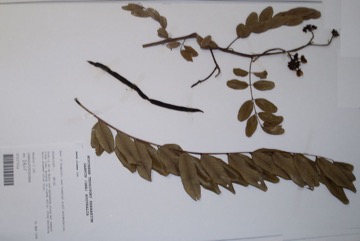
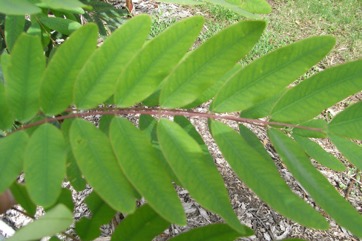
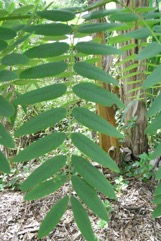
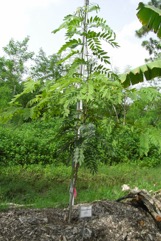
References
Ambasta S.P. (Ed.), 2000, The Useful Plants of India. CSIR India. p 110 (As Cassia siamea)
Bekele-Tesemma A., Birnie, A., & Tengnas, B., 1993, Useful Trees and Shrubs for Ethiopia. Regional Soil Conservation Unit. Technical Handbook No 5. p 136 (As Cassia siamea)
Bodkin, F., 1991, Encyclopedia Botanica. Cornstalk publishing, p 222 (As Cassia siamea)
Bunderson, W. T. et al, 2002, Common Agroforestry Species in Malawi. Malawi Agroforestry Extension Project, Pubication No. 46, Lilongwe. p 25
Burkill, I.H., 1966, A Dictionary of the Economic Products of the Malay Peninsula. Ministry of Agriculture and Cooperatives, Kuala Lumpur, Malaysia. Vol 1 (A-H) p 486 (As Cassia siamea)
Chaudhary, L. B., et al, 2014, Tree Resources of Katerniaghat Wildlife Sanctuary, Uttar Pradesh, India with especial emphasis on Conservation Status, Phenology and Economic Values. International Journal of Environment. 3(1)
Cruz-Garcia, G. S., & Price, L. L., 2011, Ethnobotanical investigation of 'wild' food plants used by rice farmers in Kalasin, Northeast Thailand. Journal of Ethnobiology and Ethnomedicine 7:33 (As Cassia siamea)
Cundall, P., (ed.), 2004, Gardening Australia: flora: the gardener's bible. ABC Books. p 1336
Dharani, N., 2002, Field Guide to common Trees & Shrubs of East Africa. Struik. p 159
Facciola, S., 1998, Cornucopia 2: a Source Book of Edible Plants. Kampong Publications, p 67 (As Cassia siamea)
FAO, 1988, Traditional Food Plants, FAO Food and Nutrition Paper 42. FAO Rome p 162
Food Composition Tables for use in East Asia FAO http://www.fao.org/infoods/directory No. 727
Fowler, D. G., 2007, Zambian Plants: Their Vernacular Names and Uses. Kew. p 32
Gardner, S., et al, 2000, A Field Guide to Forest Trees of Northern Thailand, Kobfai Publishing Project. p 171
Grubben, G. J. H. and Denton, O. A. (eds), 2004, Plant Resources of Tropical Africa 2. Vegetables. PROTA, Wageningen, Netherlands. p 564
Hearne, D.A., & Rance, S.J., 1975, Trees for Darwin and Northern Australia. AGPS, Canberra p 41, Pl 11 (As Cassia siamea)
Hibbert, M., 2002, The Aussie Plant Finder 2002, Florilegium. p 61 (As Cassia siamea)
Jacquat, C., 1990, Plants from the Markets of Thailand. D.K. Book House p 44 (As Cassia siamea)
Jiwajinda, S., et al, 2002, Suppressive Effects of Edible Thai Plants on Superoxide and Nitric Oxide Generation. Asian Pacific Journal of Cancer Prevention, Vol 3, 2002 (As Cassia siamea)
Khumgratok, S., Edible Plants in Cultural Forests of Northeastern Thailand. Mahasarakham University Thailand.
Krishen P., 2006, Trees of Delhi, A Field Guide. DK Books. p 230
Latham, P., 2004, Useful Plants of Bas-Congo province. Salvation Army & DFID p 253
Liu, Yi-tao, & Long, Chun-Lin, 2002, Studies on Edible Flowers Consumed by Ethnic Groups in Yunnan. Acta Botanica Yunnanica. 24(1):41-56 (As Cassia siamea)
Lord, E.E., & Willis, J.H., 1999, Shrubs and Trees for Australian gardens. Lothian. p 212 (As Cassia siamea)
Martin, F.W. & Ruberte, R.M., 1979, Edible Leaves of the Tropics. Antillian College Press, Mayaguez, Puerto Rico. p 198 (As Cassia siamea)
Martin, M.A., 1971, Introduction L'Ethnobotanique du Cambodge. Centre National de la Recherche Scientifique. Paris. (As Cassia siamea)
Maydell, H. von, 1990, Trees and shrubs of the Sahel: their characteristics and uses. Margraf. p (As Cassia siamea)
Mem. New York Bot. Gard. 35:98. 1982
Nakahara, K. et al, 2002, Antimutagenicity of Some Edible Thai Plants, and a Bioactive Carbazole Alkaloid, Mahanine, Isolated from Micromelum minutum. Journal of Agricultural and Food Chemistry. 50: 4796-4892
Natuhara, Y., et al, 2011, Uses of trees in paddy fields in Champasak Province, Southern Lao PDR. Landscape and Ecological Engineering. p 7
Patiri, B. & Borah, A., 2007, Wild Edible Plants of Assam. Geethaki Publishers. p 44 (As Cassia siamea)
Peekel, P.G., 1984, (Translation E.E.Henty), Flora of the Bismarck Archipelago for Naturalists, Division of Botany, Lae, PNG. p 221, (As Cassia siamea)
Pham-Hoang Ho, 1999, An Illustrated Flora of Vietnam. Nha Xuat Ban Tre. p 848 (As Cassia siamea)
Phon, P., 2000, Plants used in Cambodia. © Pauline Dy Phon, Phnom Penh, Cambodia. p 140 (As Cassia siamensis)
Royal Botanic Gardens, Kew (1999). Survey of Economic Plants for Arid and Semi-Arid Lands (SEPASAL) database. Published on the Internet; http://www.rbgkew.org.uk/ceb/sepasal/internet [Accessed 26th April 2011]
Sam, H. V. et al, 2004, Trees of Laos and Vietnam: A Field Guide to 100 Economically or Ecologically Important Species. BLUMEA 49: 201-349
Setalaphruk, C. & Price, L. L., 2007, Children's traditional ecological knowledge of wild food resources: a case study in a rural village in Northeast Thailand. Journal of Ethnobiology and Ethnomedicine. 3:33 (As Cassia)
Somnasang, P., et al, 1998, Indigenous knowledge of wild food hunting and gathering in north-east Thailand. Food and Nutrition Bulletin vol. 19 No. 4 pp 359ff (As Cassia)
Somnasang, P., et al, 2000, Knowing gathering and eating: Knowledge and attitudes about wild food in an Isan Village in north eastern Thailand. Journal of Ethnobiology 20(2):197-216
Srichaiwong, P., et al, 2014, A Study of the Biodiversity of Natural Food Production to Support Community Upstream of Chi Basin, Thailand. Asian Social Science 10 (2): (As Cassia)
Staples, G.W. and Herbst, D.R., 2005, A tropical Garden Flora. Bishop Museum Press, Honolulu, Hawaii. p 326
Sukarya, D. G., (Ed.) 2013, 3,500 Plant Species of the Botanic Gardens of Indonesia. LIPI p 504
Swaziland's Flora Database http://www.sntc.org.sz/flora
Tewari, D.N., 1994, Important Plants of India. International Book Distributors, India. p 12 (As Cassia siamea)
Van Sam, H. et al, 2004, Trees of Laos and Vietnam: A Field Guide to 100 Economically or Ecologically Important Species. Blumea 29 (2004) 201-349
Verdcourt, B., 1979, Manual of New Guinea Legumes. Botany Bulletin No 11, Division of Botany, Lae, Papua New Guinea. p 52 (As Cassia siamea)
WATT,
World Checklist of Useful Plant Species 2020. Royal Botanic Gardens, Kew
www.worldagroforestrycentre.org/treedb/
Xu, You-Kai, et al, 2004, Wild Vegetable Resources and Market Survey in Xishuangbanna, Southwest China. Economic Botany. 58(4): 647-667. (As Cassia siamea)